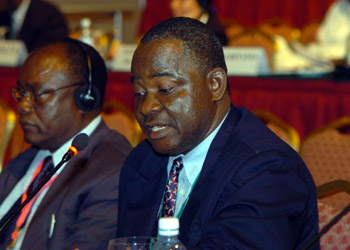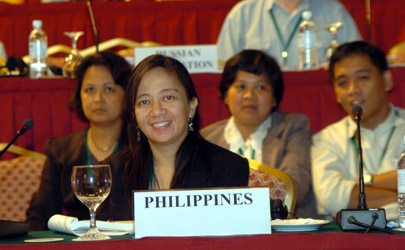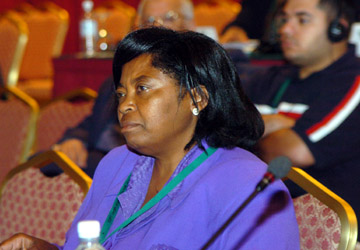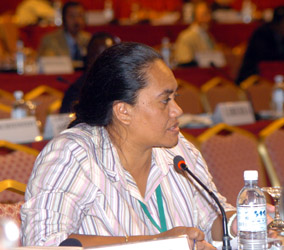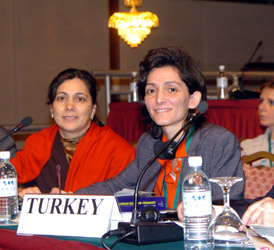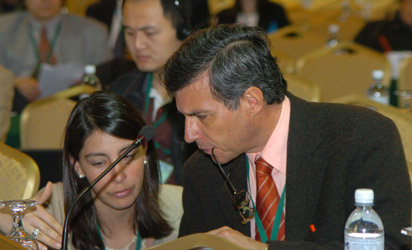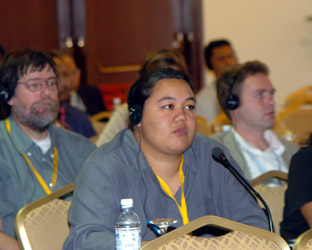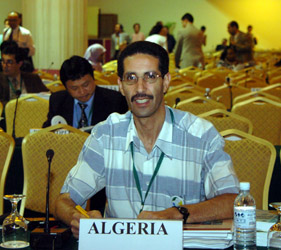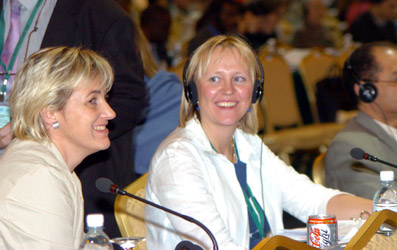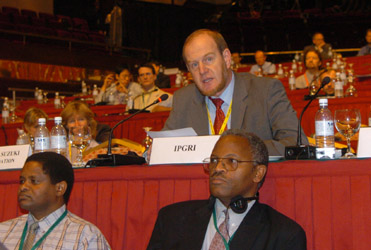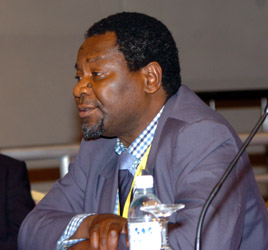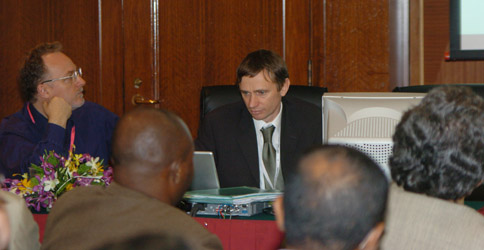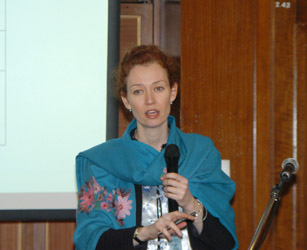|
7th CONFERENCE OF THE PARTIES TO THE CONVENTION ON BIOLOGICAL DIVERSITY (COP-7) Kuala Lumpur, Malaysia; 9-20 February 2004
Highlights
for Wednesday 11 February 2004
On Wednesday, COP-7 delegates met in two Working Groups (WGs). WG-I continued discussing protected areas (PAs). WG-II considered the follow-up to the WSSD, including the Millennium Development Goals (MDGs), the Multi-Year Programme of Work (MYPOW) and operations of the Convention, and started discussing the international regime on access and benefit-sharing (ABS). A brief Plenary was held in the afternoon to hear progress reports on WG-I and WG-II's work, and statements by organizations. A contact group met in the evening to discuss ABS. Above photo L-R: Nehemiah Rotich (UNEP), Dato' Seri Law Hieng Ding (COP-7 President), Olivier Jalbert (CBD) |
||||||||||||||||
|
|
|
||||||
|
|
|||||||
|
|
|||||||
|
The PHILIPPINES highlighted measures beyond PA boundaries and noted the recent establishment of a regional partnership. Above photo L-R: Menbers of the Philippine delegation headed by Mundita Lim (front) with Beth Roxas, Norma Molinyawe and Elpidio Peria (back) |
Grace
Thitai (Kenya) said buffer zones
and corridors are sources of wildlife and should be included in the work
programme.
|
||||||
|
|||||||
| Working Group II: WSSD Follow-up | |||||||
|
|||||||
| Access and Benefit-Sharing: | |||||||
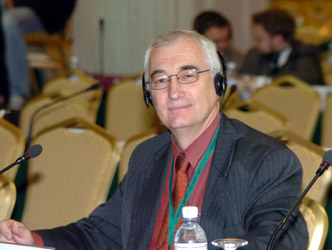 |
|||||||
|
|
Geoff
Burton (Australia) (above) said the WSSD's call to negotiate an
international ABS regime contains a commitment to promote the Bonn
Guidelines' implementation, does not cover matters beyond the CBD's
scope, and should not lead to amending national ABS legislation. He
stressed the importance of interacting with existing mechanisms and of
establishing a rational negotiation process. |
||||||
|
|
|||||||
|
|
|||||||
|
Algeria
said an international ABS regime should build on experiences from various
sources such as the Bonn Guidelines or regional and national ABS systems.
Above photo: Boumediene Mahi (Algeria) |
Norway
said it has recently established a requirement to disclose the origin of
genetic in patent applications. Above photo L-R: Norwegian delegates Grethe
Evjen and Birthe Ivars |
||||||
| Plenary:
Statements |
|||||||
|
|||||||
|
|
|||||||
|
Side Event: Business, Investment and the CBD |
|||||||
|
On 11 February, the CBD Secretariat and the UNU-Institute of Advanced Studies co-hosted a lunch-time side event on Business, Investment and the CBD. The meeting was chaired by David Cooper (left) of the CBD. |
|||||||
|
|
|||||||
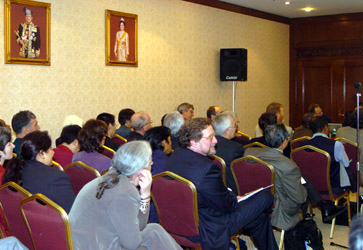 Martin Hollands, of Fauna and Flora International gave a presentation on the Energy and Biodiversity Initiative, in which FFI has participated, together with Shell, BP, Chevron Texaco, Statoil, TNC, CI, IUCN and the Smithsonian Institution. He explained the two-year process in which the companies and NGOs had produced a range of tools for integrating biodiversity into oil and gas operations, including how to incorporate biodiversity into site selection, EIA and environmental management systems. The EBI documents also set out a business case for good management of biodiversity and a set of conclusions. All the documents can be found on www.ebi.org. |
|||||||
|
Links |
|
|



